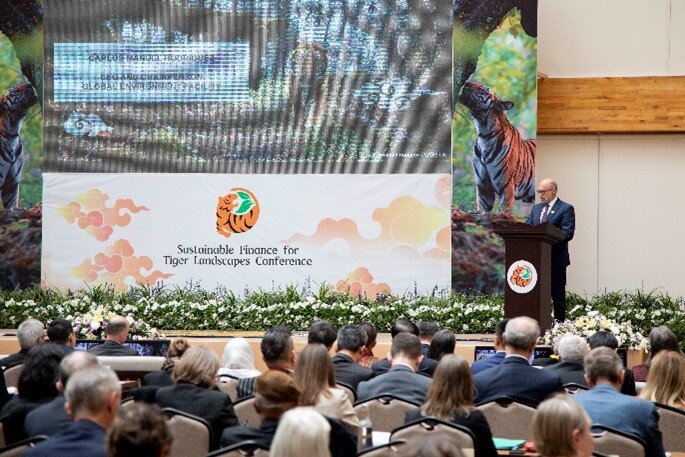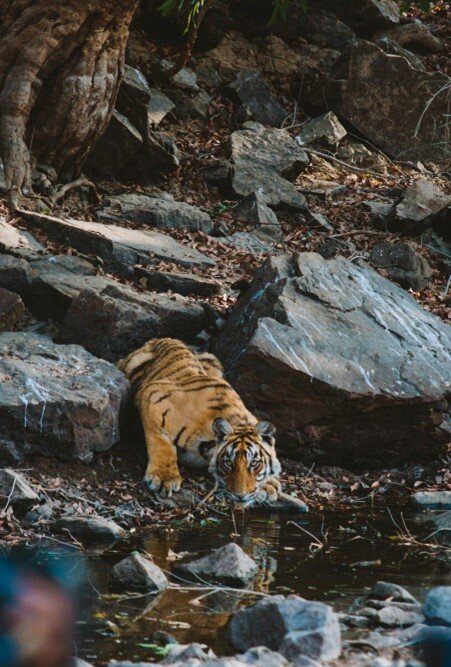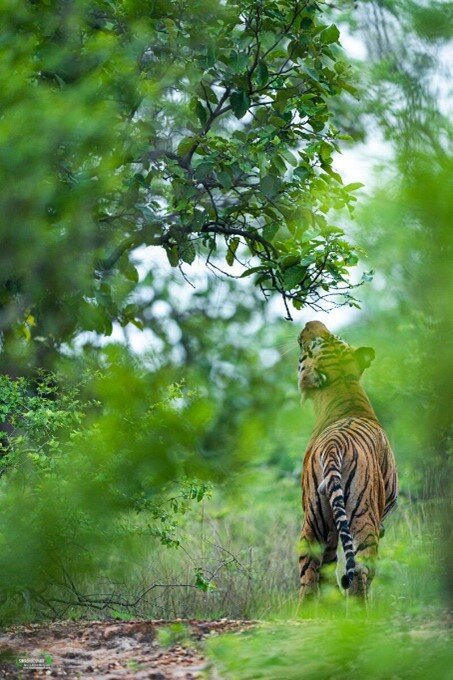By Jenna Bailey | Associate Program Officer
The Paro Statement: A Pledge for Tiger Conservation
April 23rd marked the conclusion of the Sustainable Finance for Tiger Landscapes Conference, a pivotal event bringing together tiger range countries, private and public sector donors, international development agencies, and conservation NGOs. This gathering aimed to pave the way for innovative solutions to sustainable finance tiger landscape conservation. Representatives from ten tiger range countries including Bangladesh, Bhutan, Cambodia, China, India, Kazakhstan, Malaysia, Nepal, Thailand, and Vietnam delivered compelling statements on their progress and ambitions for conserving these critical habitats.
The highlight of the conference was the unveiling of the Paro Statement, a call to action inviting participants to join a shared commitment to catalyze an additional US $1 billion to protect tigers and their landscapes over the next decade. This funding will not only help secure and and increase global tiger numbers but will also contribute to expanding tiger ranges and restoring the ecological integrity of tiger landscapes, benefiting not just the species, but also biodiversity and local communities.
WWF’s Commitment to Tigers
The Paro Statement signifies a continued commitment to implementing innovative finance solutions, fostering international and public-private collaboration, and supporting national level initiatives that ensure the well-being of these majestic creatures and their ecosystems. Back in 2010, WWF joined forces with 13 tiger range countries and international organizations towards a global commitment to double the number of wild tigers, called TX2. Thanks to these efforts, global tiger numbers are growing.
“Over the last 10 years, the global tiger population has rebounded from a historic low of around 3,200 tigers to some 5,500 tigers in the wild today. This is the result of remarkable collaborations between tiger range countries, local communities, and organizations such as those represented in the Tiger Conservation Coalition”, said Carter Robers, CEO of WWF-US. “Securing a thriving future for tigers and their critical landscapes was once considered out of reach. But the momentum from this conference gives us hope for an even brighter future.”
The Importance of Tiger Conservation
As the world’s largest cat and apex predator, tigers play a crucial role in ecosystem health, requiring large, undisturbed areas with diverse habitats and abundant prey. The success or failure of tiger conservation efforts goes beyond securing the future of a single species – it sets a precedent for how we consider and prioritize the health of nature in the face of global development and a changing climate.
Looking ahead, WWF will continue working with tiger range country governments, indigenous peoples, local communities, and other NGOs to stabilize tiger populations and distribution across their existing and historical range by 2034.
How You Can Help!
Thanks to supporters like you, WWF has been able to accelerate tiger monitoring, habitat protection, anti-poaching efforts, and policy change advocacy. The fight is not over! You can join us by supporting this project and sharing it with your family, friends, and colleagues. This helps to make a huge difference in our work and set an inspiring example that together, change is possible. Thank you!
Links:
By Jenna Bailey | Associate Program Officer
By Jenna Bailey | Associate Program Officer
Project reports on GlobalGiving are posted directly to globalgiving.org by Project Leaders as they are completed, generally every 3-4 months. To protect the integrity of these documents, GlobalGiving does not alter them; therefore you may find some language or formatting issues.
If you donate to this project or have donated to this project, you can receive an email when this project posts a report. You can also subscribe for reports without donating.
Support this important cause by creating a personalized fundraising page.
Start a Fundraiser

